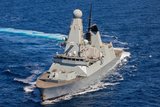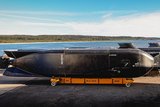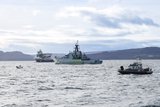Australia launches aerial surveillance programme
The Australian Department of Defence (DoD) has begun an aerial surveillance service across the Central and Western Pacific region as part of the government’s $2 billion Pacific Maritime Security programme, the DoD announced on 28 January.
Once implemented, two long-range aircraft will provide up to 1,400 hours of aerial surveillance every year across the Western and Central Pacific region.
According to DoD, the surveillance, in conjunction with the Pacific Patrol Boat programme will provide targeted maritime patrol and enhance the ability of Pacific Island countries to defend against regional maritime security threats such as transnational crime and illegal fishing. Pacific countries will have access to surveillance information to support intelligence-targeted patrolling and protection of their resources.
The $10 million aerial surveillance service is funded by the Australian DoD, and aircraft tasking will be coordinated by the Pacific Islands Forum Fisheries Agency (FFA), along with communication with regional maritime law enforcement agencies.
The Australian DoD has engaged Technology Service Corporation to provide the aerial surveillance service.
More from Naval Warfare
-
![Canadian Coast Guard’s OOSV delivery is “major milestone” in fleet modernisation]()
Canadian Coast Guard’s OOSV delivery is “major milestone” in fleet modernisation
The Polar Class 6 platform is the largest CCG science-dedicated vessel and will operate on the country’s east coast.
-
![How the Anduril-HHI autonomous ship plan fits in with the US Navy’s MASC programme]()
How the Anduril-HHI autonomous ship plan fits in with the US Navy’s MASC programme
The new modular vessel is expected to be developed for both commercial and defence use, with a heavy focus on production speed and mission flexibility.
-
![Indo Pacific 2025: Autonomous systems reigned but can the Australian Defence Force afford it?]()
Indo Pacific 2025: Autonomous systems reigned but can the Australian Defence Force afford it?
Multiple autonomous systems and technologies were on display at this year’s Indo Pacific, but questions remain over how the Australian Department of Defence will balance the books.
-
![How the UK Royal Navy is powering up its hybrid fleet to combat new threats]()
How the UK Royal Navy is powering up its hybrid fleet to combat new threats
Since it announced its move towards a new “hybrid navy” earlier this year, the force has announced a number of new uncrewed technologies in the works.























